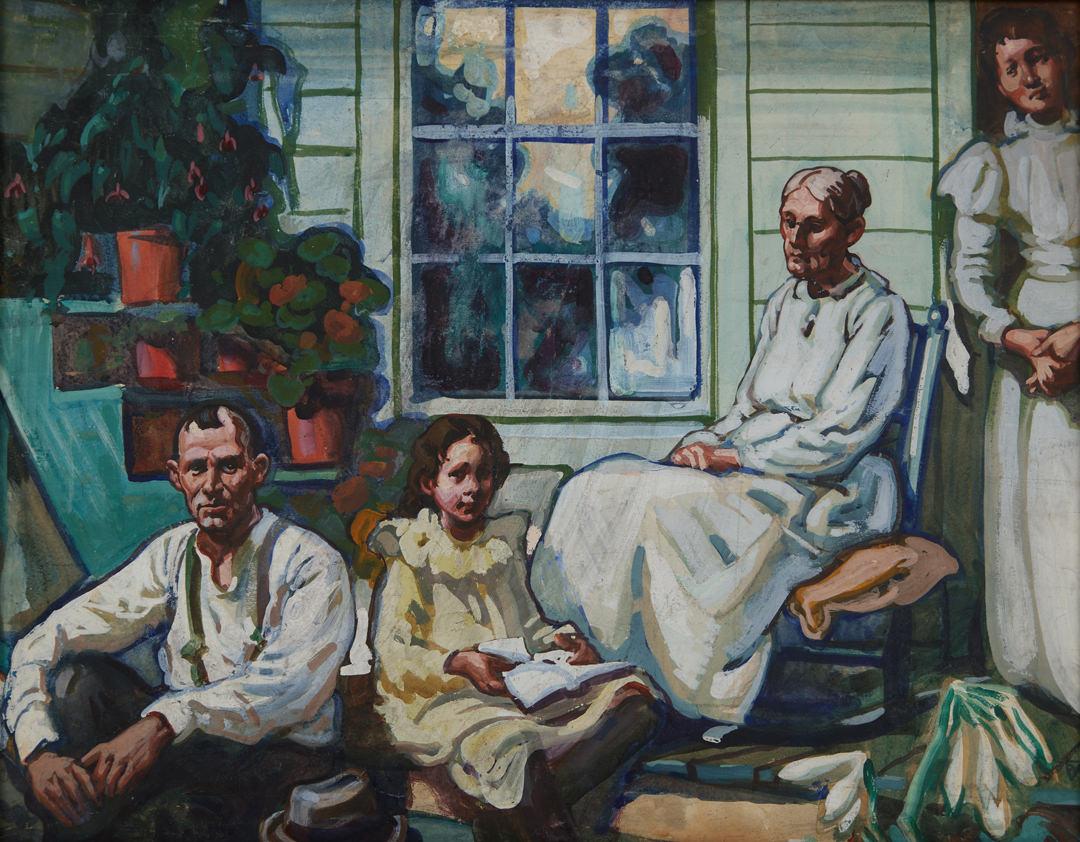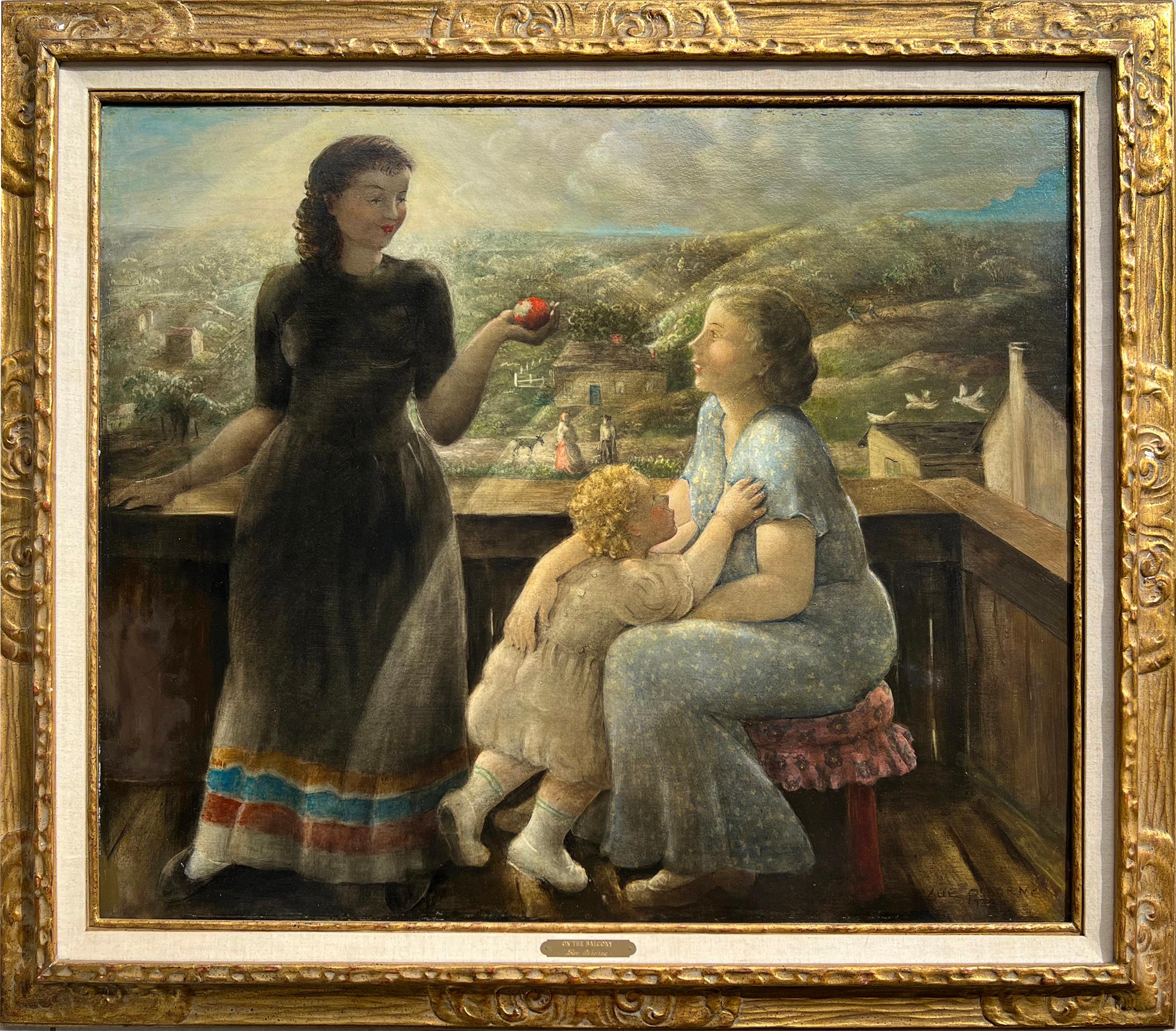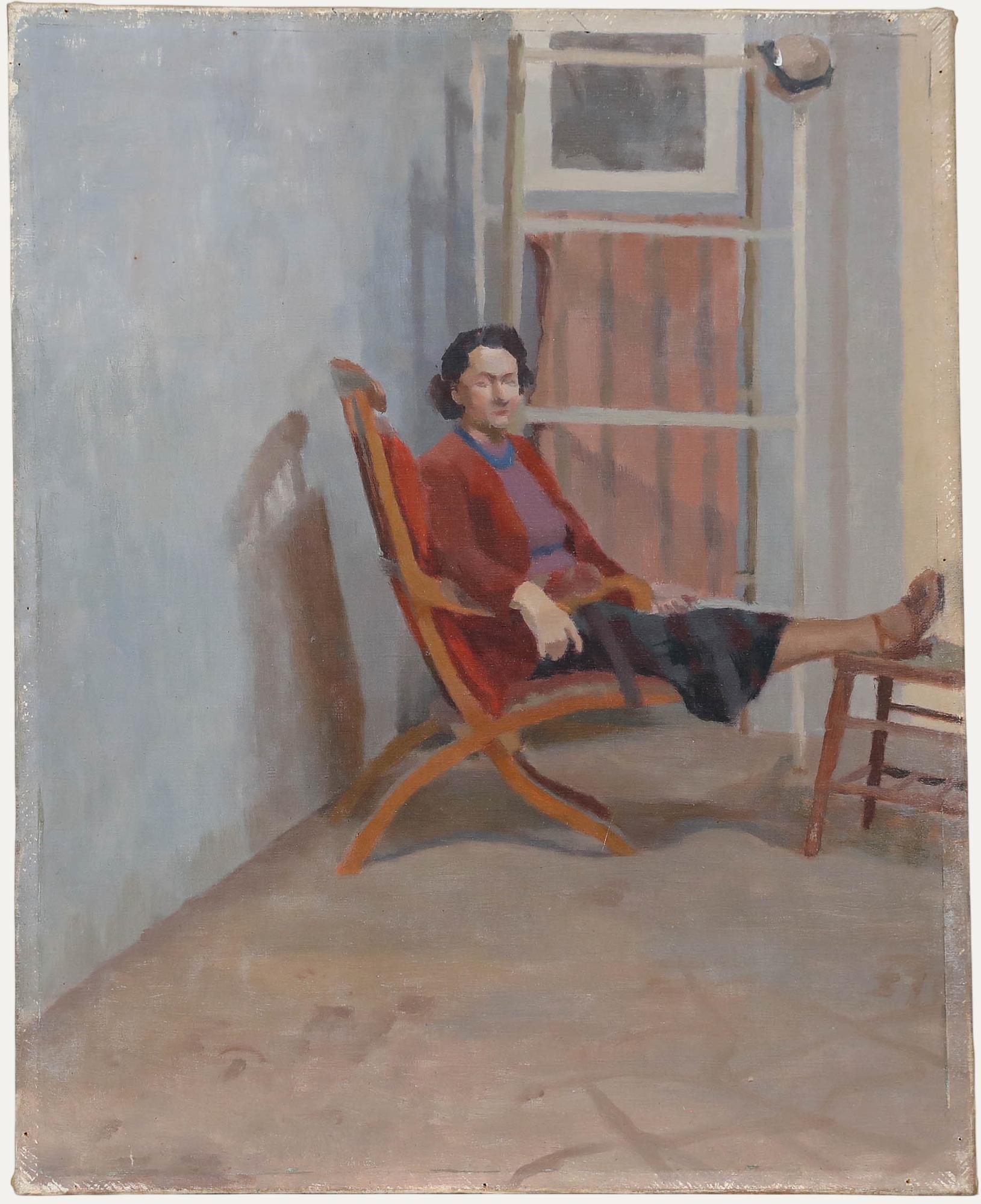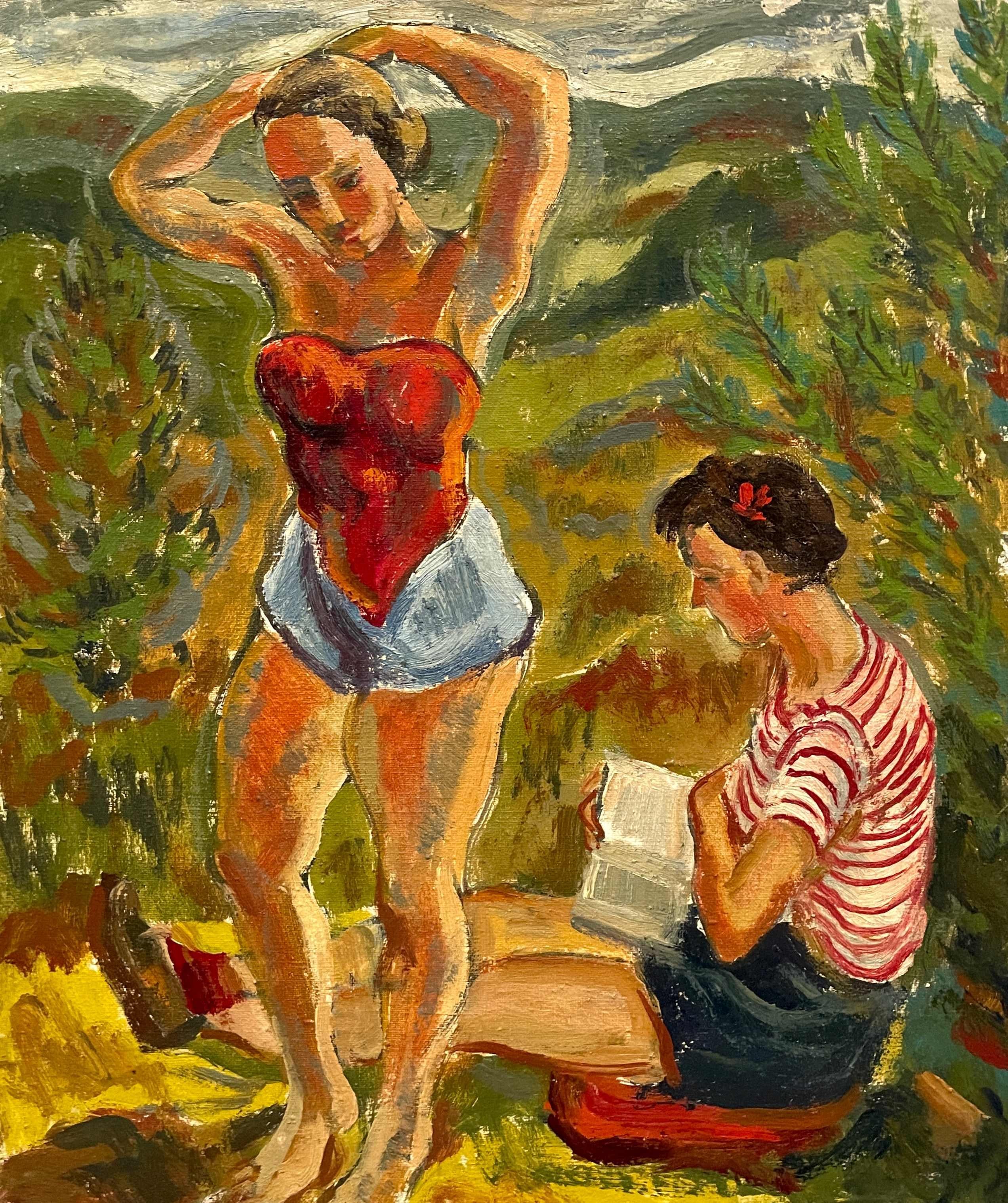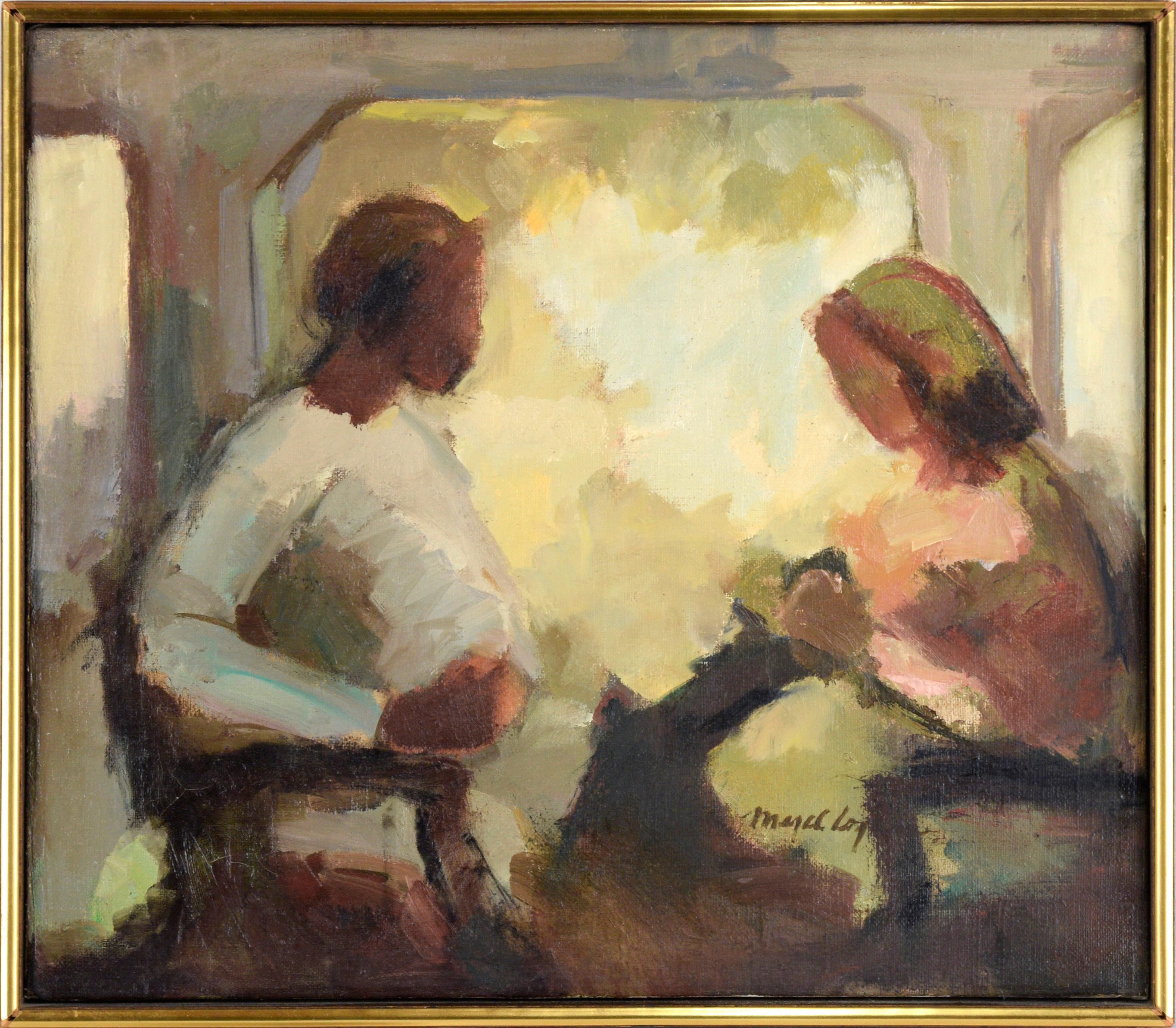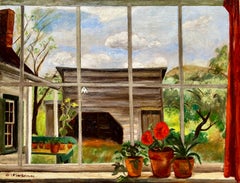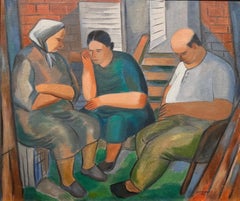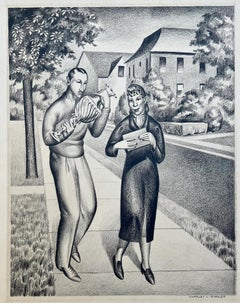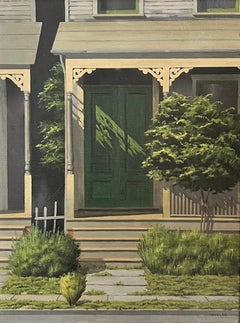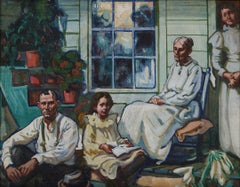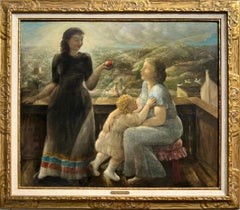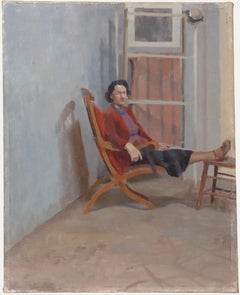Items Similar to Judy and Rita on Porch at Afton
Want more images or videos?
Request additional images or videos from the seller
1 of 5
Lois Wilde HartshorneJudy and Rita on Porch at Aftonc. 1936
c. 1936
$4,750
£3,584.69
€4,103.93
CA$6,699.07
A$7,354.75
CHF 3,836.99
MX$89,002.70
NOK 48,090.69
SEK 45,314.07
DKK 30,634.77
About the Item
Judy and Rita on Porch at Afton, c. 1936, oil on canvas, 24 x 36 inches, title inscribed on tacking margin; “Judy” and “Rita” inscribed verso, NB: purchased together with The New Road, a painting Hartshorne exhibited at the Minnesota State Fair, likely in 1936, unsigned but guaranteed to be by the Lois Wilde Hartshorne
Lois Wilde Hartshorne was a painter who mainly worked in Minnesota and Wisconsin. The daughter of a prominent philosophy professor at the University of Minnesota, Hartshorne was a 1924 graduate of Smith College. The artist married Richard Hartshorne, a Geography professor, in 1928. She also studied art at the University of Minnesota and with Cameron Booth, Anthony Angarola, and with Lhote in Paris. During the 1930s, Hartshorne painted expressive, but spare, modernist American Scene paintings. She exhibited at the Minnesota State Fair as early as 1935. In 1936, she won second prize in the figure composition category ahead of Booth who won the third-place award. Based on the apparent ages of two of her daughters, it is likely that Hartshorne completed Judy and Rita on Porch at Afton around that time. This is is a rare work, since Hartshorne’s production was limited and she became less active as she raised a family during the late 1930s through the early 1950. In addition to exhibiting again at the State Fair in 1937, Hartshorne was elected President of the Minnesota Artis, an honor which The Minneapolis Star favorably reported. In 1938 and 1939, the Hartshorne family moved to Nazi-occupied Vienna, Austria while Professor Hartshorne was on sabbatical. While there, the Hartshornes provided money and assistance to Jewish friends to immigrate to the United States. In 1940, Hartshorne moved to Madison where her husband assumed a professorship at the University of Wisconsin. Hartshorne exhibited in the Madison Artist’s Exhibitions during the 1940s, winning an honorable mention in 1941. She was a member of the Madison Art Center, the Madison Art Guild, and the Madison Art Association which hosted a solo exhibition of her work in 1958. In connection with the solo exhibition, The Capital Times noted that Hartshorne had “returned to her field after retiring while her three daughters were growing up.” Hartshorne is listed in Who Was Who in American Art.
- Creator:Lois Wilde Hartshorne (1902 - 1972, American)
- Creation Year:c. 1936
- Dimensions:Height: 24 in (60.96 cm)Width: 30 in (76.2 cm)
- More Editions & Sizes:24 x 30 inchesPrice: $4,750
- Medium:
- Movement & Style:
- Period:
- Condition:
- Gallery Location:Los Angeles, CA
- Reference Number:1stDibs: LU1859216261812
About the Seller
5.0
Vetted Professional Seller
Every seller passes strict standards for authenticity and reliability
1stDibs seller since 2022
17 sales on 1stDibs
Typical response time: <1 hour
- ShippingRetrieving quote...Shipping from: Los Angeles, CA
- Return Policy
Authenticity Guarantee
In the unlikely event there’s an issue with an item’s authenticity, contact us within 1 year for a full refund. DetailsMoney-Back Guarantee
If your item is not as described, is damaged in transit, or does not arrive, contact us within 7 days for a full refund. Details24-Hour Cancellation
You have a 24-hour grace period in which to reconsider your purchase, with no questions asked.Vetted Professional Sellers
Our world-class sellers must adhere to strict standards for service and quality, maintaining the integrity of our listings.Price-Match Guarantee
If you find that a seller listed the same item for a lower price elsewhere, we’ll match it.Trusted Global Delivery
Our best-in-class carrier network provides specialized shipping options worldwide, including custom delivery.More From This Seller
View AllThe Woodshed or Woodshed, Woodstock
Located in Los Angeles, CA
The Woodshed or Woodshed, Woodstock, 1932, oil on canvas, signed lower left, 19 x 25 inches, exhibited Downtown Gallery, New York, NY, likely as part of the solo exhibition Dorothy ...
Category
1930s American Modern Landscape Paintings
Materials
Canvas, Oil
Neighbors
By Norman Barr
Located in Los Angeles, CA
Neighbors, 1939, oil on canvas, signed and dated lower right, 22 x 26 inches
Norman Barr was an American Scene painter and muralist known for his poignant depictions of working-clas...
Category
1930s American Modern Figurative Paintings
Materials
Canvas, Oil
She Gets Her Way (Couple with Vase)
Located in Los Angeles, CA
This drawing is part of our exhibition Charles Goeller: A Wistful Loneliness.
Crayon on paper, 11 ½ x 9 inches (image), 14 x 11 inches (sheet), Signed...
Category
1930s American Modern Figurative Drawings and Watercolors
Materials
Crayon, Paper
Across the Street
Located in Los Angeles, CA
This painting is part of our exhibition Charles Goeller: A Wistful Loneliness.
Oil on canvas, 16 x 12 inches, Signed lower right
Exhibited:
1) [Solo E...
Category
1940s American Modern Landscape Paintings
Materials
Oil, Canvas
Rooftop Bathers (Untitled)
Located in Los Angeles, CA
Rooftop Bathers (Untitled), c. 1940s, oil on canvas, 22 x 32 inches, signed lower right
Betty Waldo Parish gives us a delightful slice of life in 1940s New York, as we see a coupl...
Category
1940s American Modern Figurative Paintings
Materials
Canvas, Oil
Seated Figure (Portrait in Landscape – Paris Model Against Landscape)
Located in Los Angeles, CA
This painting is part of our exhibition Charles Goeller: A Wistful Loneliness.
Oil on canvas, 29 x 24 inches, Signed lower left
Price Upon Request
Category
1920s American Modern Portrait Paintings
Materials
Oil
You May Also Like
On the Back Porch, Brecksville, Ohio, Early 20th Century Regionalist Scene
By Frank Wilcox
Located in Beachwood, OH
Frank Nelson Wilcox (American, 1887-1964)
On the Back Porch, Brecksville, Ohio, c. 1922
Watercolor on paper
Monogram lower right
21.5 x 27. 5 inc...
Category
1920s American Modern Figurative Paintings
Materials
Watercolor
On the Balcony - American Scene Female Artist
By Louise Lue Osborne
Located in Miami, FL
Female artist Louise Lue Osborne paints a classic composition with an interaction of two women and a child soaked in golden late light. The figural gro...
Category
1930s American Realist Figurative Paintings
Materials
Synthetic Resin, Fiberboard
$12,000 Sale Price
20% Off
Pauline Plummer (b.1933) - 20th Century Oil, On the Sunlit Porch
Located in Corsham, GB
This intimate interior scene depicts a solitary figure relaxing in a wooden chair on a softly lit porch. The composition employs a restrained palette of earth tones and gentle lighti...
Category
20th Century Portrait Paintings
Materials
Oil
A Delightful 1940 Painting of Two Women Lounging by Artist Harold Haydon
By Harold Haydon
Located in Chicago, IL
A delightful 1940 painting of two women lounging in the Vermont wilderness by artist Harold Haydon. Haydon had a summer compound in Calais, Vermont, where he often painted. Images ...
Category
1940s American Modern Figurative Paintings
Materials
Canvas, Oil
On the Balcony, Two Women Seated at Table, Woman Cleveland Artist
Located in Beachwood, OH
Thelma Frazier Winter (American, 1905-1977)
On the Balcony
Pastel on paper
Signed lower right
20 x 16 inches
Thelma Frazier Winter was an American enamelist, ceramic sculptor, and p...
Category
Mid-20th Century Figurative Drawings and Watercolors
Materials
Pastel
"Porch People" - Figurative Composition in Oil on Linen
Located in Soquel, CA
Bold composition of two people on a porch by Majel McHugh Logan (American, 1916-1982). Two people sit facing each other on a porch, backlit by warm sun. The piece is sketchy but confident, with thick brushstrokes adding high contrast shadows and highlights. Although the subjects' faces are undefined, there is nonetheless an expressive quality in their body language.
Signed "Majel Logan" in the lower right corner.\
Artist's tag on verso with title.
Presented in a wood frame with a gold accent.
Frame size: 14.75"H x 16.75"W
Canvas size: 14"H x 16"W
Majel Logan (nee McHugh) (American, 1916-1982) was born in Utah. After graduation from St. Mary of the Wasatch College in Utah, she studied at the Pennsylvania Academy of Fine Arts. She continued to study at Idaho State University before eventually settling in Santa Clara, CA. Although she was a professional artist at the time, she nonetheless continued her studies at San Jose State University in the 1970s.
By the mid-70s, she had won 43 awards in state, regional, and local competitions, including Fiesta des Artes (Los Gatos...
Category
Mid-20th Century American Impressionist Figurative Paintings
Materials
Linen, Oil
$680 Sale Price
20% Off
More Ways To Browse
Judys Vintage
William Brice
Woman Wine
Woman With Dog Painting
Abduction Painting
Ademola Clement Ajayi
African Mask Painting
American Genre Painting
Bijan Choudhury
Boy And Dog Painting
Brunette Painting
By Emilio Grau Sala
Carmelo Nino
Chateau Chenonceau
Chess Oil Painting
Christ Carrying Cross
De Jonghe
Deposition Of Christ
